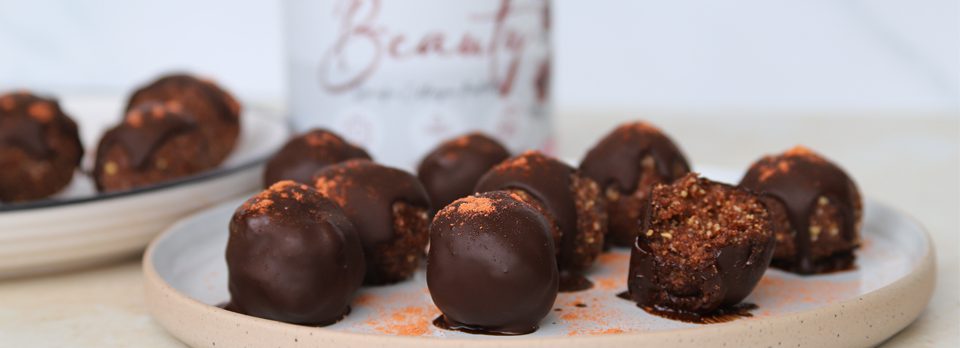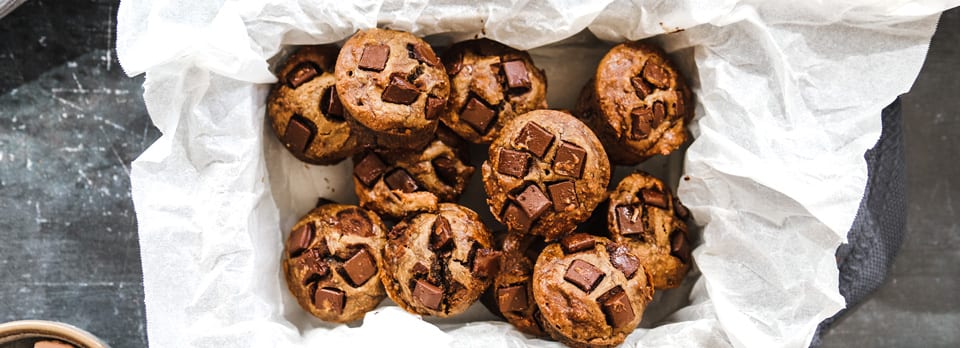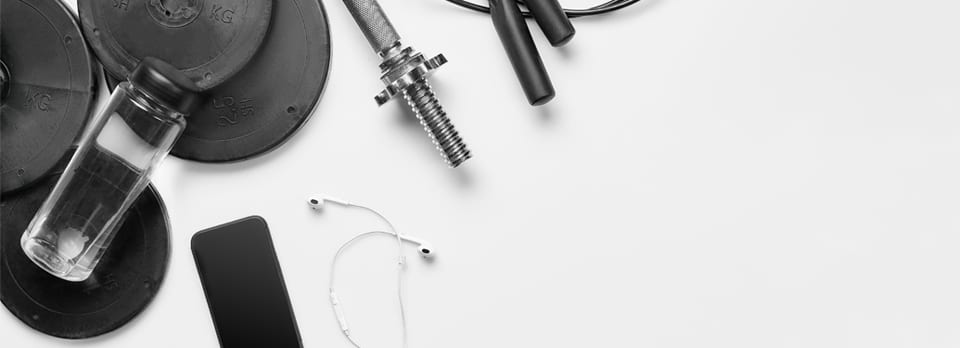The Bidirectional Relationship between Polyphenols and the Gut Microbiome
The microbiome is a critical part of the health of humans and it was first labeled as the ‘microbiome’ in 2001. One of the major roles of the microbiome is to aid in the digestion of foods, along with the acid in your stomach, the enzymes you secrete and the simple acts of cooking and chewing, all play major roles in the gut. There are approximately 100,000,000,000,000 bacterial cells in the gut and there are over 1000 species (and many more sub-species). Like your own fingerprints, everyone's gut microbiome is unique and in fact, is changing from day to day. These changes can be caused by age, geographical location, diet, and drugs such as antibiotics.
The Impact of Polyphenols on Microorganisms
For thousands of years, herbs and spices have been used for the treatment of diseases and the preservation of foods. There are numerous antimicrobial chemicals naturally found in foods such as flavonoids, anthocyanins, saponins, alkaloids, glycosides, coumarins, tannins, some vitamins, and phenolic acids. There is now significant data that shows that herbs such as rosemary, thyme, oregano, sage, and mint among others can knock off both gram-positive and gram-negative bacteria. There is evidence that shows that the polyphenols that are found widely in foods can kill bacteria species in the gut microbiome.
The interesting mechanisms of actions of the polyphenols on the gut microbiome are now subject to intense interest from the scientific community. The fascinating news is that these natural polyphenols can discriminate between the bacteria they kill. In other words, the polyphenols seem to kill the pathogenic bacteria and spare and even encourage, the growth of the beneficial bacteria. This is in contrast to 'normal' antibiotics because antibiotics kill a wide variety of bacteria, including good bacteria. This appears to be due to evolution where we have been consuming these polyphenols for millions of years and the microbiome has adapted to these polyphenols. However, if an invader/bad bacteria (such as S. aureus, Vibrio tubiashii, L. pneumophila, M. luteus, Streptococcus sp., B. cereus) finds its way into the microbiome, it seems the polyphenols will take them out.
Inflammation and the ‘Superheros’
Inflammation is a protective mechanism in the human body to survive an acute microbial attack and is beneficial for the human organism. However, chronic (long-term) inflammation is a leading cause of morbidity and mortality in the Western world. Diseases, where inflammation plays a leading role, include cardiovascular disease, diabetes, kidney disease, fatty liver disease, autoimmune disease, and a plethora of neurological diseases.
We do have protection from chronic inflammation and it lies in our microbiome. Akkermansia muciniphila and Faecalibacterium prausnitzii are protectors when it comes to inflammation. In our bowels, these beneficial microbes inhibit one of the key inflammatory chemicals NF-kB, and polyphenols have been found in several studies to increase Akkermansia muciniphila .
When we think of inflammation, we traditionally think of taking anti-inflammatory drugs or, if you are into natural medicine, herbs such as ginger, turmeric, and Boswellia are all-powerful anti-inflammatory foods and should be considered when treating chronic inflammatory conditions. However, one of the best ways to reduce inflammation is to consume a diet rich in polyphenols. Sure, healthy foods are good for you anyway, but polyphenols have a potent anti-inflammatory effect via the microbiome.
Polyphenols Regulate the Immune System
Everyone knows that a healthy immune system is required for good health. Most people will try to ‘boost’ their immune system thinking it will protect them from "bugs". You would be right to think this. But there is more to the immune system than that. You can have too much of a good thing. Too much of one part of the immune system can lead to allergies and too much of another part of the immune system can lead to autoimmune diseases. So how to get the balance right?
Polyphenols not only reduce inflammation, but studies have found that they can help regulate the immune system, meaning individuals with autoimmune system conditions and allergies may benefit from a polyphenol-rich diet.
The Take Home Message
Good foods are good for us and one of the most important chemicals found naturally in foods is a group of chemicals called polyphenols. Sure, you get vitamins, minerals, and of course soluble fibre, but that is only part of the story. Polyphenols are a unique group of chemicals that can beneficially modify the gut microbiome, and have powerful anti-inflammatory and immune regulating effects. This has positive flow-on effects which may help reduce many chronic diseases which plague the Western population.
References
Williamson G. The role of polyphenols in modern nutrition. Nutr Bull. 2017 Sep;42(3):226-235. doi: 10.1111/nbu.12278. Epub 2017 Aug 15. PMID: 28983192; PMCID: PMC5601283.
Commensal host-bacterial relationships in the gut. Hooper LV, Gordon JI Science. 2001 May 11; 292(5519):1115-8.
Human gut microbiome: the second genome of the human body. Zhu B, Wang X, Li L Protein Cell. 2010 Aug; 1(8):718-25.
A human gut microbial gene catalogue established by metagenomic sequencing.
Qin J, Li R, Raes J, Arumugam M, Burgdorf KS, Manichanh C, Nielsen T, Pons N, Levenez F, Yamada T, Mende DR, Li J, Xu J, Li S, Li D, Cao J, Wang B, Liang H, Zheng H, Xie Y, Tap J, Lepage P, Bertalan M, Batto JM, Hansen T, Le Paslier D, Linneberg A, Nielsen HB, Pelletier E, Renault P, Sicheritz-Ponten T, Turner K, Zhu H, Yu C, Li S, Jian M, Zhou Y, Li Y, Zhang X, Li S, Qin N, Yang H, Wang J, Brunak S, Doré J, Guarner F, Kristiansen K, Pedersen O, Parkhill J, Weissenbach J, MetaHIT Consortium., Bork P, Ehrlich SD, Wang J
Nature. 2010 Mar 4; 464(7285):59-65.
Introduction to the human gut microbiota. Thursby E, Juge N Biochem J. 2017 May 16; 474(11):1823-1836.
Górniak I., Bartoszewski R., Króliczewski J. Comprehensive review of antimicrobial activities of plant flavonoids. Phytochem. Rev. 2019;18:241–272. doi: 10.1007/s11101-018-9591-z.
Makarewicz M, Drożdż I, Tarko T, Duda-Chodak A. The Interactions between Polyphenols and Microorganisms, Especially Gut Microbiota. Antioxidants (Basel). 2021;10(2):188. Published 2021 Jan 28. doi:10.3390/antiox10020188
Al-Juraifani A.A. Antimicrobial activity of some medicinal plants used in Saudi Arabia. CJPAS. 2011;5:509–1512
Furman D, Campisi J, Verdin E, et al. Chronic inflammation in the etiology of disease across the life span. Nat Med. 2019;25(12):1822-1832. doi:10.1038/s41591-019-0675-0
Involvement of Gut Microbiota, Microbial Metabolites and Interaction with Polyphenol in Host Immunometabolism.
Henning S.M., Summanen P.H., Lee R.-P., Yang J., Finegold S.M., Heber D., Li Z. Pomegranate ellagitannins stimulate the growth of Akkermansia muciniphila in vivo. Anaerobe. 2017;43:56–60. doi: 10.1016/j.anaerobe.2016.12.003.
A next-generation beneficial microbe: Akkermansia muciniphila. Naito Y, Uchiyama K, Takagi T J Clin Biochem Nutr. 2018 Jul; 63(1):33-35.
Lakhanpal D. P., Rai D. D. K. Quercetin: a versatile flavonoid. Internet Journal of Medical Update - EJOURNAL. 2007;2(2):20–35. doi: 10.4314/ijmu.v2i2.39851.















